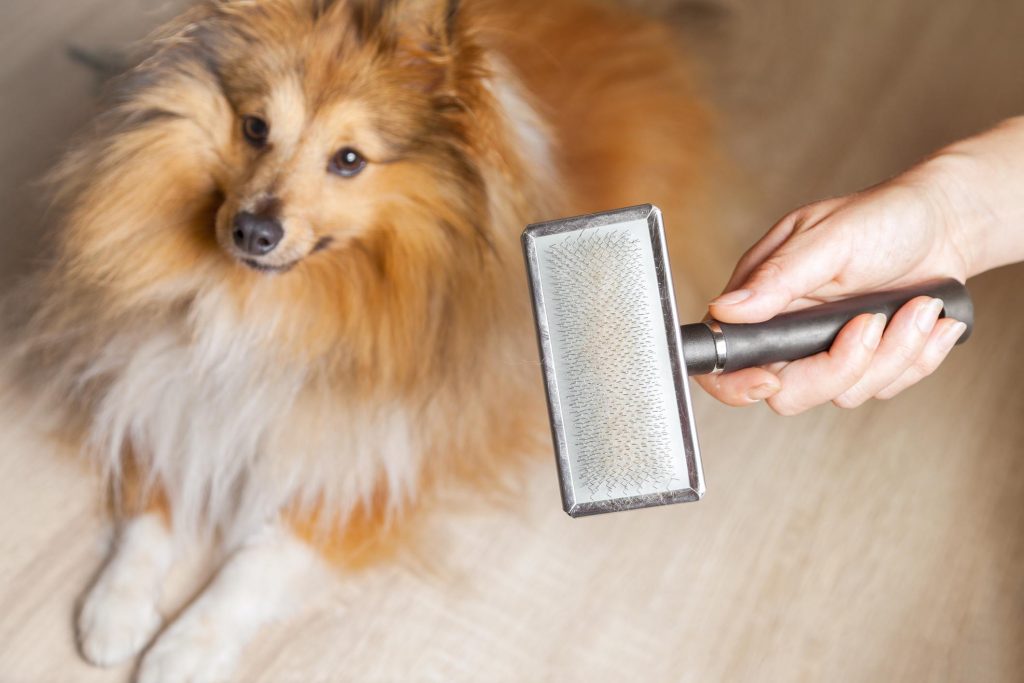Hair, There, and Everywhere: How to Deal with Dog Hair
 You’ve swept it up, you’ve vacuumed for the hundredth time, you own more lint brushes than the local pharmacy – and your home still looks like a Wild West scene with those furball tumbleweeds rolling across the living room.
You’ve swept it up, you’ve vacuumed for the hundredth time, you own more lint brushes than the local pharmacy – and your home still looks like a Wild West scene with those furball tumbleweeds rolling across the living room.
Dog hair can be an aggravation, particularly during high shedding seasons when some dogs will lose a bit of that thick winter coat. Realistically, though, dogs shed any time of year, which can make for a lot of work when it comes to grooming and keeping your home and clothing fur free.
To help your fuzzy friend out, OVRS has put together some tips for managing your dog’s mane!
10 Tips for Dealing with Dog Hair
- Have your pet professionally groomed – To help keep fur under control, a visit to the groomer’s every few weeks can make a difference in skin and coat health, as well as curbing some of the excess hair. This is especially true for dogs with long hair or thick undercoats.
- Bathe your pet – Giving your doggo a bath once every two weeks can help to minimize shedding. It also feels great for your pet, especially during the hot summer months.
- Brush your pet – Daily brushing is a wonderful way to bond while caring for your pet’s coat. Brushes such as the Furminator do an awesome job of getting rid of those hairs that were just about to cover your new pants.
- Cover furniture with blankets – If you allow your furry pal to be on your furniture, one of the best ways to keep fur and dirt at bay is to use blankets or slip covers, which can be removed and thrown into the wash. Similarly, use throw rugs to protect nice carpets.
- Vacuum frequently – Yes, we know… Vacuuming is not exactly the most enjoyable solution, but by doing so a few times a week, you greatly diminish the amount of pet fur that collects. Consider cleaning upholstery and curtains every so often too, as these materials also attract fur.
- Feed a nutritious diet – Certain nutritional deficiencies or a low quality diet can affect the condition of pet hair, making it prone to dullness, shedding, and other issues (as well as impacting health). Discuss with your veterinarian the best diet for your furry friend.
- Make sure your pet is healthy – Many illnesses and diseases can also affect the quality of your pet’s coat. Chronic pain, aging, and obesity can keep your pet from self-grooming, which over time can damage the coat.
- Choose the right tools for the job – Picking up excess hair on clothes and upholstery can be a drag! Make it easier by using packaging tape, lint brushes, dryer sheets, damp sponges or some of these other great fur removal tools to catch ore remove those stray hairs. Here are tips for cleaning pet hair from all kinds of home surfaces.
- Add some humidity – Dry conditions, such as running the furnace in the winter, can dry out the air, making it easier for hair to adhere to surfaces. Condition the air in your home by using a humidifier during winter months for easier pick-up.
- Invest in a good vacuum – Many vacuums simply do not do the job when it comes to pet fur. If your pet sheds a lot you may want to look into purchasing a high quality vacuum.
Keeping the home entirely fur-free may not be possible, but by using a few of these tips you can at least keep those fur tumbleweeds from overtaking your house. Do you have any tricks to eradicate fur that we didn’t mention? We’d love to hear more!


